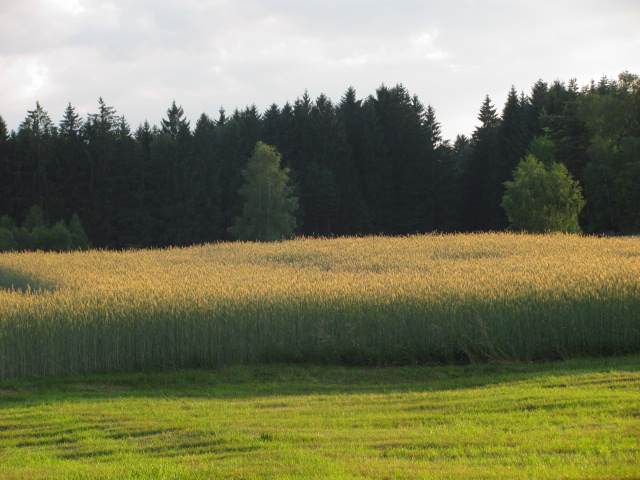Why does it matter?
A
study in 2008 found that around 40% of the energy consumed in the US and the UK was used in our buildings. (If you look worldwide the percentage dropped to 24%, but developing countries are expected to double their contribution in the next 20 years.) Energy consumption currently accounts for
80% of humans' CO
2 contribution.
According to the same 2008
study, US and UK homes use respectively 53% and 62% of their energy on heating and cooling. Respective office buildings put 48% and 55% of their energy towards climate control.
What is passive heating?
The concrete floor in Potwine Passive House is its
'thermal mass', a material that takes a long time to heat up and cool down. Heat moves in between the concrete and air so that it's going to the cooler of the two. In other words, when the house gets hot in the afternoon the heat is stored in the cool floor. Voil
à, passive air conditioning! And at night when the house cools down, the heat stored in the concrete during the afternoon is released into the air. Ta-dah, passive heating!
Passive heating is a balancing act of evening out the warm and cold daily temperatures. Unfortunately, this means it is
not advised for extreme climate temperature. (Averaging a
really cold afternoon with a
really, really, really cold night just leaves you
really, really cold all the time.)
But why bare concrete?
After all, concrete has a lower
heat capacity (how hard it is to heat and cool) than wood.
The problem lays with wood's inability to conduct heat. It would cause uneven heating.
Rugs are also out. They act as insulation so that the concrete can't heat up during the day.
 |
Potwine Passive House used blown-in fiberglass for insulation
because it was recycled and didn't need to be fireproofed.
|
How can insulation help?
In Erzurum, Turkey researchers found that they could get an
energy savings of 27% by optimizing insulation in ceilings, walls, and floors. They noted the inverse exponential relationship between insulation thickness and fuel/emissions reduction (i.e. eventually adding more insulation won't help keep your home comfortable). Three years later in Denizli, Turkey optimizing insulations in ceilings, walls, and floors was found to have an
energy savings of 46.6% and an emission reduction of 41.53%. This is partially due to windows (which were not insulated) in Erzurum accounting for
47% of heat loss as opposed to Denizli where they only contributed
34.8%. There was no schematic of the insulation at the Erzurum site, so differences in construction technique cannot be analyzed.
While the exact amount of benefits from insulation varies, it will always help keep your home warm during the winter and cool during the increasingly probabilistic heat waves.












